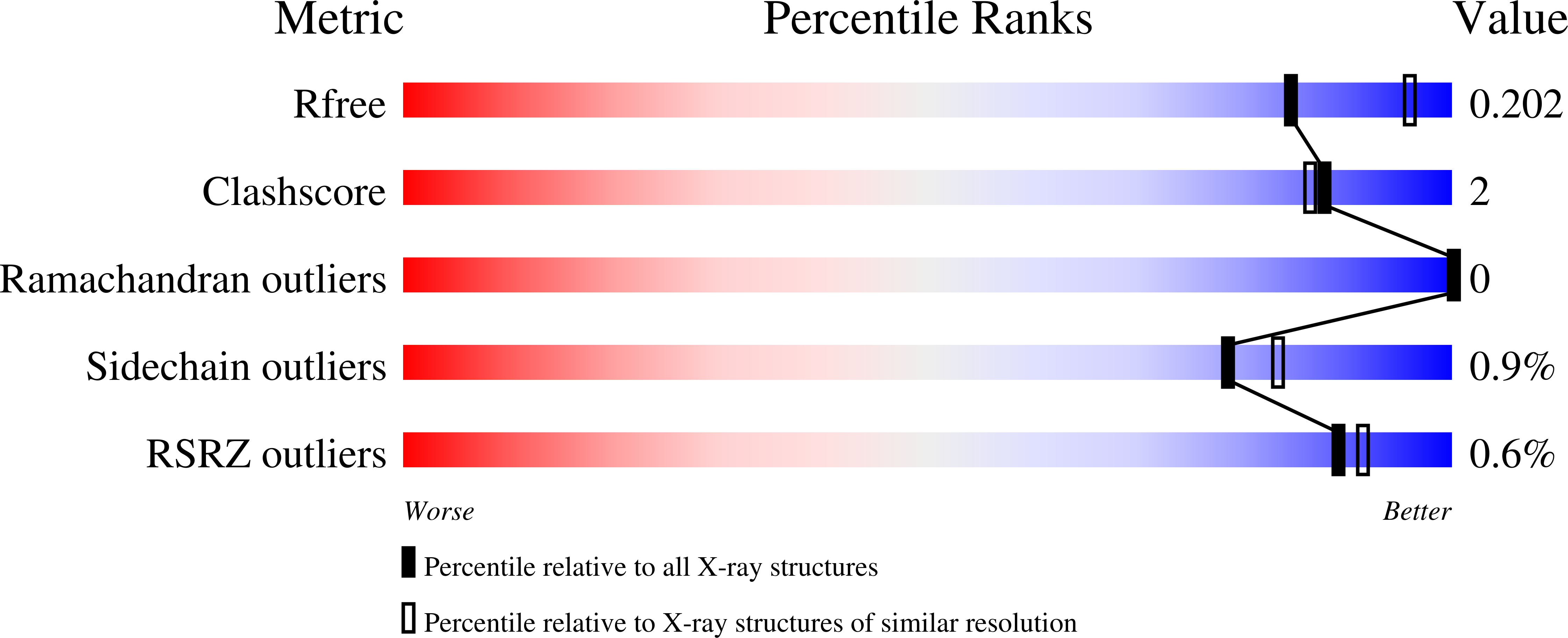Structural Basis for (2 R ,3 R )-Taxifolin Binding and Reaction Products to the Bacterial Chalcone Isomerase of Eubacterium ramulus .
Palm, G.J., Thomsen, M., Berndt, L., Hinrichs, W.(2022) Molecules 27
- PubMed: 36432010
- DOI: https://doi.org/10.3390/molecules27227909
- Primary Citation of Related Structures:
4D4F, 8B7R, 8B7U, 8B7Z - PubMed Abstract:
The bacterial chalcone isomerase (CHI) from Eubacterium ramulus catalyses the first step in a flavanone-degradation pathway by a reverse Michael addition. The overall fold and the constitution of the active site of the enzyme completely differ from the well-characterised chalcone isomerase of plants. For (+)-taxifolin, CHI catalyses the intramolecular ring contraction to alphitonin. In this study, Fwe perform crystal structure analyses of CHI and its active site mutant His33Ala in the presence of the substrate taxifolin at 2.15 and 2.8 Å resolution, respectively. The inactive enzyme binds the substrate (+)-taxifolin as well defined, whereas the electron density maps of the native CHI show a superposition of substrate, product alphitonin, and most probably also the reaction intermediate taxifolin chalcone. Evidently, His33 mediates the stereospecific acid-base reaction by abstracting a proton from the flavonoid scaffold. The stereospecificity of the product is discussed.
Organizational Affiliation:
Institute of Biochemistry, University of Greifswald, Felix-Hausdorff-Str. 4, 17489 Greifswald, Germany.

















